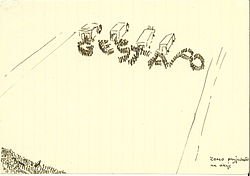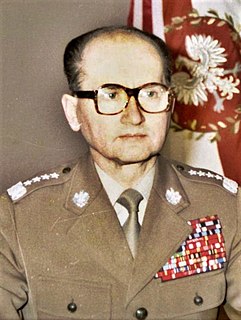
Wojciech Witold Jaruzelski was a Polish military officer, politician and de facto leader of the Polish People's Republic from 1981 until 1989. He was the First Secretary of the Polish United Workers' Party between 1981 and 1989, making him the last leader of the Polish People's Republic. Jaruzelski served as Prime Minister from 1981 to 1985, the Chairman of the Council of State from 1985 to 1989 and briefly as President of Poland from 1989 to 1990, when the office of President was restored after 37 years. He was also the last commander-in-chief of the Polish People's Army, which in 1990 became the Polish Armed Forces.

The Polish People's Republic was a country in Central Europe that existed from 1947 to 1989 as the predecessor of the modern Republic of Poland. With a population of approximately 37.9 million near the end of its existence, it was the second-most populous communist and Eastern Bloc country in Europe. It was also one of the main signatories of the Warsaw Pact alliance. The largest city and official capital since 1947 was Warsaw, followed by the industrial city of Łódź and cultural city of Kraków. The country was bordered by the Baltic Sea to the north, the Soviet Union to the east, Czechoslovakia to the south, and East Germany to the west.

The Combat Groups of the Working Class was a paramilitary organization in the German Democratic Republic (GDR) from 1953 to 1989.

The history of Poland from 1945 to 1989 spans the period of Marxist-Leninist regime in Poland after the end of World War II. These years, while featuring general industrialization, urbanization and many improvements in the standard of living, were marred by early Stalinist repressions, social unrest, political strife and severe economic difficulties.

Czesław Jan Kiszczak(listen) was a Polish general, communist-era interior minister (1981–1990) and prime minister (1989).
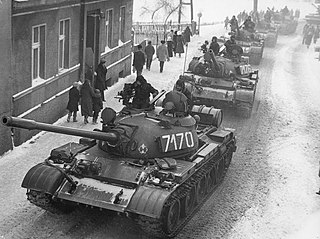
Martial law in Poland existed between 13 December 1981 and 22 July 1983. The government of the Polish People's Republic drastically restricted everyday life by introducing martial law and a military junta in an attempt to counter political opposition, in particular the Solidarity movement.

Milicja Obywatelska, in English known as the Citizens' Militia and commonly abbreviated to MO, was the national police organization of the Polish People's Republic. It was established on 7 October 1944 by the Polish Committee of National Liberation, effectively replacing the pre-war police force. The Citizen's Militia would remain the predominant means of policing in Poland until 10 May 1990, when it was transformed back into Policja.
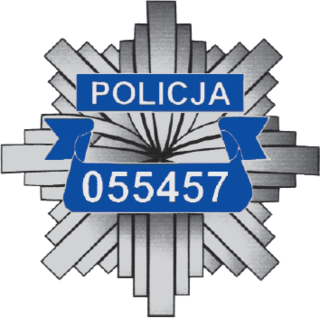
Policja is the generic name for the national police force of the Republic of Poland. The Polish police force was known as policja throughout the Second Polish Republic (1918–1939), and in the modern Republic of Poland since 1990. Its current size is 100,000 officers and ca. 25,000 civilian employees. Among the branches in the force are: Criminal Service, Traffic Police Service, Prevention Service and Supporting Service. Most towns and some villages have their own city guards, which supervise public order and road safety. However, city guards have jurisdiction only over misdemeanors and in cases of crimes may serve only in a supportive role for the state police.

The Ministry of Public Security, commonly known as UB or later SB, was the secret police, intelligence and counter-espionage agency operating in the Polish People's Republic. From 1945 to 1954 it was known as the Department of Security, and from 1956 to 1990 as the Security Service.

The Polish People's Army constituted the second formation of the Polish Armed Forces in the East in 1943–1945, and in 1945–1989 the armed forces of the Polish communist state, ruled by the Polish Workers' Party and then the Polish United Workers' Party. The communist-led Polish armed forces, allowed and facilitated by Joseph Stalin, were the result of efforts made in the early 1940s in the Soviet Union by Wanda Wasilewska and Zygmunt Berling.

The June 1976 protests were a series of protests and demonstrations in the Polish People's Republic that took place after Prime Minister Piotr Jaroszewicz revealed the plan for a sudden increase in the price of many basic commodities, particularly food. Prices in Poland were at that time fixed, and controlled by the government, which was falling into increasing debt.

The Pacification of Wujek was a strike-breaking action by the Polish police and army at the Wujek Coal Mine in Katowice, Poland, culminating in the massacre of nine striking miners on December 16, 1981.

Law enforcement in Poland consists of the Police (Policja), City Guards, and several smaller specialised agencies. The Prokuratura Krajowa and an independent judiciary also play an important role in the maintenance of law and order.

The 1988 Polish strikes were a massive wave of workers' strikes which broke out from 21 April, 1988 in the Polish People's Republic. The strikes, as well as street demonstrations, continued throughout spring and summer, ending in early September 1988. These actions shook the Communist regime of the country to such an extent that it was forced to begin talking about recognising Solidarity. As a result, later that year, the regime decided to negotiate with the opposition, which opened way for the 1989 Round Table Agreement. The second, much bigger wave of strikes surprised both the government, and top leaders of Solidarity, who were not expecting actions of such intensity. These strikes were mostly organized by local activists, who had no idea that their leaders from Warsaw had already started secret negotiations with the Communists.

The 1982 demonstrations in Poland refers to anti-government street demonstrations organized by underground Solidarity to commemorate the second anniversary of the Gdańsk Agreement. The bloodiest protest occurred in southwestern Poland, in the town of Lubin, on August 31, 1982. The Lubin demonstration resulted in three protesters killed by Communist services, and an unknown number of wounded. On the same day, rallies and demonstrations took place in several cities across the country. According to Solidarity sources, there were four more victims—in Wrocław, Gdańsk, Nowa Huta, and Toruń. According to official government sources, there were demonstrations in 66 cities.

ORMO, or the Volunteer Reserve of the Citizens' Militia, was a paramilitary organization and voluntary support brigade of the communist police force, the Citizen's Militia (MO). ORMO was founded in the Polish People's Republic in 1946, and disbanded in 1989 by the Sejm after the collapse of the communist bloc in Central and Eastern Europe.
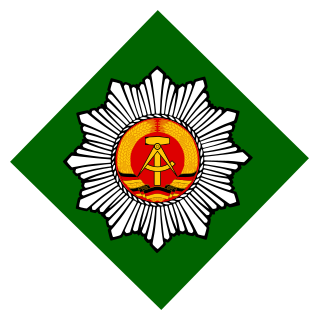
The Volkspolizei-Bereitschaften were paramilitary police units of the German Democratic Republic from 1955 to 1990. The VPB were barracked units of the Volkspolizei for riot control and counterinsurgency with regiment status, under control of the Ministry of the Interior and considered part of the armed forces, but were never part of the National People's Army or the Ministry of National Defence.
The dissident movement in the Polish People's Republic was a political movement in the Polish People's Republic whose aim was to change the political system from unitary Marxist–Leninist government imposed by the USSR to democratic form of government.

Equality marches or equality parades are the Polish equivalent of pride parades, which aim to improve LGBT rights in Poland. They have been held in various Polish cities and towns since 2001.


